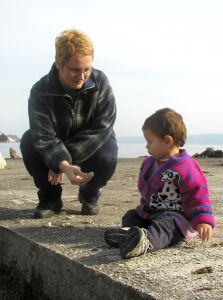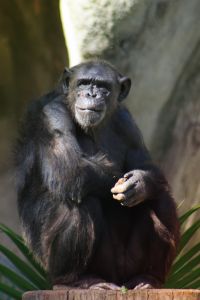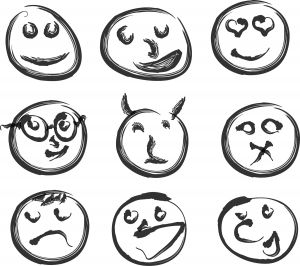From API’s Publications Team
 Canadian parents who have been the target of parental alienation that is negatively affecting their attachment to their children now have the courts on their side. According to an article on TheGlobeAndMail.com, “Courts Can Rescue Kids From an Alienating Parent,” judges in Canada are now willing to intervene in such custody cases and remove children from homes of the alienating parent even if it’s against the child’s wishes.
Canadian parents who have been the target of parental alienation that is negatively affecting their attachment to their children now have the courts on their side. According to an article on TheGlobeAndMail.com, “Courts Can Rescue Kids From an Alienating Parent,” judges in Canada are now willing to intervene in such custody cases and remove children from homes of the alienating parent even if it’s against the child’s wishes.
What is Parental Alienation?
Parental alienation is tactics used by one parent to systematically poison the minds of the children against the other parent. For more information, read these articles from the DIVORCED & SINGLE PARENTING section:
The concern is that there is no scientific proof that this intervention to resolve parental alienation cases works. The support for custody reversal is the studies that reveal what will happen if parental alienation is left to continue unchecked. Children grow up to experience feelings of guilt toward the alienated parent and anger toward the alienating parent, to the point where these emotional traumas negatively affects their relationships with others.
Earlier in January, an Ontario judge stripped a mother of the custody of her three children, ages 9-14, and limited her access to the children to no closer than 300 meters unless in a counseling session. The father had fought for 10 years for custody away from the woman who was trying to excommunicate him from their children’s lives. The father now has the right to take away the children’s cell phones and other devices to prevent communication with their mother, and to remove them from the country in search of counseling.
Eventually, the goal is for the mother to have less restrictive access and communication with the children and for the children to have a positive relationship with both parents. However, the interventions and counseling are to help the child figure out their true feelings toward both parents.
An Example of Parental Alienation
Author Richard Warshak describes a severe case:
During the custody trial, an 18-year-old child threatened violence against his mother if the judge awarded her custody. Today, the child admits that these threats were not his true feelings but what he had been brainwashed to say and think.
This is only the third such ruling in Canada’s history. The first two occurred in Ontario in 1989 and in Quebec in 1991.
“There is a greater understanding that the courts really hold the power to rescue the children from the situation of being caught in the middle,” said Richard Warshak, author of Divorce Poison and coordinator of a workshop that helps alienated parents reunite with their children. In the judgment, Madam Justice Faye McWatt wrote that the mother’s “unrelenting behavior toward the children is tantamount to emotional abuse.”
None of the children wanted to live with their father, but it was determined that the children, even the teen, were unable to think clearly about what they wanted because they had been brainwashed by their mother.
“The Canadian courts are in the forefront,” said Warshak of Dallas, Texas.
But making rulings in parental alienation cases will continue to be a slow process. Child psychologist Barbara Fidler, who had been involved with the family for many years, said professionals involved in these cases need time to assess the situation and to try less drastic measures such as parenting plans and visitation changes.
“There are some cases of what we call realistic estrangement,” Fidler said. “The alienated parent may be abusive, and the child has good reason for not wanting to visit. And then there is true pathological alienation, in which children are refusing contact without good reason.”
This latest ruling is giving hope to parents targeted by parental alienation, who say the tide appears to be turning.
“There was a period of time when people thought that if you did anything to sever that attachment between the child and the favored parent — that is, the allegedly toxic parent — that could cause more harm than any good,” said Jeffery Wilson, a family lawyer specializing in child advocacy.
To read the entire article, go to http://www.theglobeandmail.com/servlet/story/RTGAM.20090129.wlgenex29/BNStory/lifeFamily/home.
 Nutritional deficiencies in mothers can affect her mental health and lead to inconsistent patterns of mother-child interactions, which in turn increases the likelihood of creating an insecure attachment between the mother and child.
Nutritional deficiencies in mothers can affect her mental health and lead to inconsistent patterns of mother-child interactions, which in turn increases the likelihood of creating an insecure attachment between the mother and child. From API’s Publications Team
From API’s Publications Team A study to be published in the March issue of Behavior Therapy, “Generalized Anxiety Disorder: Connections with Self-Reported Attachment,” credits secure parent-child attachment in lessening the risk of that child eventually developing a severe anxiety disorder as an adult.
A study to be published in the March issue of Behavior Therapy, “Generalized Anxiety Disorder: Connections with Self-Reported Attachment,” credits secure parent-child attachment in lessening the risk of that child eventually developing a severe anxiety disorder as an adult. Your child is naturally imaginative — all children are. Most theories of child development view young children as highly creative, with a natural tendency to fantasize, experiment, and explore their physical and conceptual environment.
Your child is naturally imaginative — all children are. Most theories of child development view young children as highly creative, with a natural tendency to fantasize, experiment, and explore their physical and conceptual environment. Dear Readers,
Dear Readers,
 A study published in the Development Pyschobiology journal involving the care of orphaned chimpanzees could help change the way human orphans are cared for.
A study published in the Development Pyschobiology journal involving the care of orphaned chimpanzees could help change the way human orphans are cared for. Custody cases are rarely pleasant, but in about 10 percent of these cases, it truly becomes a battle between the estranged parents and the long-term effects on their children’s mental wellbeing can be devastating.
Custody cases are rarely pleasant, but in about 10 percent of these cases, it truly becomes a battle between the estranged parents and the long-term effects on their children’s mental wellbeing can be devastating. A University of Maryland study shows that, more than marriage, involving the father during the prenatal period leads to a stable family life.
A University of Maryland study shows that, more than marriage, involving the father during the prenatal period leads to a stable family life. Canadian parents who have been the target of parental alienation that is negatively affecting their attachment to their children now have the courts on their side. According to an article on TheGlobeAndMail.com, “Courts Can Rescue Kids From an Alienating Parent,” judges in Canada are now willing to intervene in such custody cases and remove children from homes of the alienating parent even if it’s against the child’s wishes.
Canadian parents who have been the target of parental alienation that is negatively affecting their attachment to their children now have the courts on their side. According to an article on TheGlobeAndMail.com, “Courts Can Rescue Kids From an Alienating Parent,” judges in Canada are now willing to intervene in such custody cases and remove children from homes of the alienating parent even if it’s against the child’s wishes.